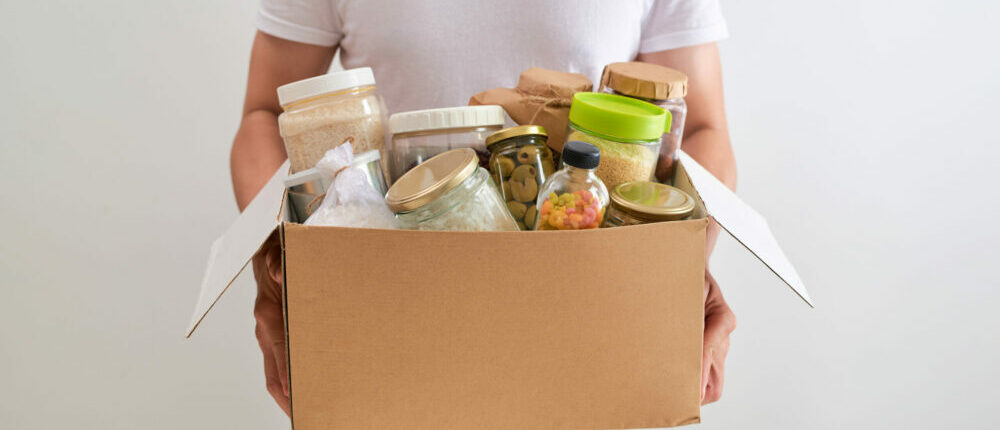
By Marnie Werner
During these days of social distancing and #StayHomeMN, just going to the grocery store can be a daunting task for many among us. But as COVID-19 spreads, communities are also concerned about how to help people who can’t or shouldn’t go out, people who may already be sick and recovering at home, and those who have been exposed and are self-isolating. In rural areas, how can we be sure our neighbors are getting enough to eat?
To answer that, the folks at the University of Minnesota Extension Regional Sustainable Development Partnership, along with their colleagues in Family Development, have created a plan for a 14-Day Meal Kit. Each 60-pound meal kit comes with enough non-perishable food to create meals for one person for 14 days, all made from food that is affordable, nutritious, easy to prepare and readily available at rural grocery stores. Each kit would cost about $120-$150.
The idea behind the kit is that it would be assembled at a local grocery store—all the food items on the list are readily available and affordable and can be put together into easy-to-prepare meals. Local grocers can sell them (helping the grocery store and the local economy), but some communities are going a step further. In Clinton, MN, where RSDP’s statewide director Kathy Draeger lives, members of one church worked with the local grocer to purchase the supplies for and pack six of the 14-Day Meal Kits. The kits are now stored at a church, and the county food shelf and county emergency management have been made aware that these kits are standing by, ready to go.
It’s a simple tool that has already been resonating with communities and people around Minnesota, and Extension is receiving requests for the plans from North Dakota and Kansas. Already, people are offering to purchase kits for their communities. The inventors of the meal kit are hoping communities will work with their local grocery stores to make these kits available in their towns.
What they would like to see, Draeger says, is for groups to pay for the kits, then have the store build the kits with the food that is available—for example, substituting one canned fruit that’s available for one that isn’t—then pack the food into three 20-pound boxes and label them as a kit and have them ready to be picked up by whoever is storing them: a community group, church, foodshelf, emergency management, etc. In Big Stone County, the kits are being held by a church and others will be held by the school.
Besides helping those in need in the weeks ahead, Draeger also sees the kits as a way of supporting the state’s 250 rural grocery stores. More information and the complete list and instructions for making a 14-Day Meal Kit are available on Extension’s web site.
